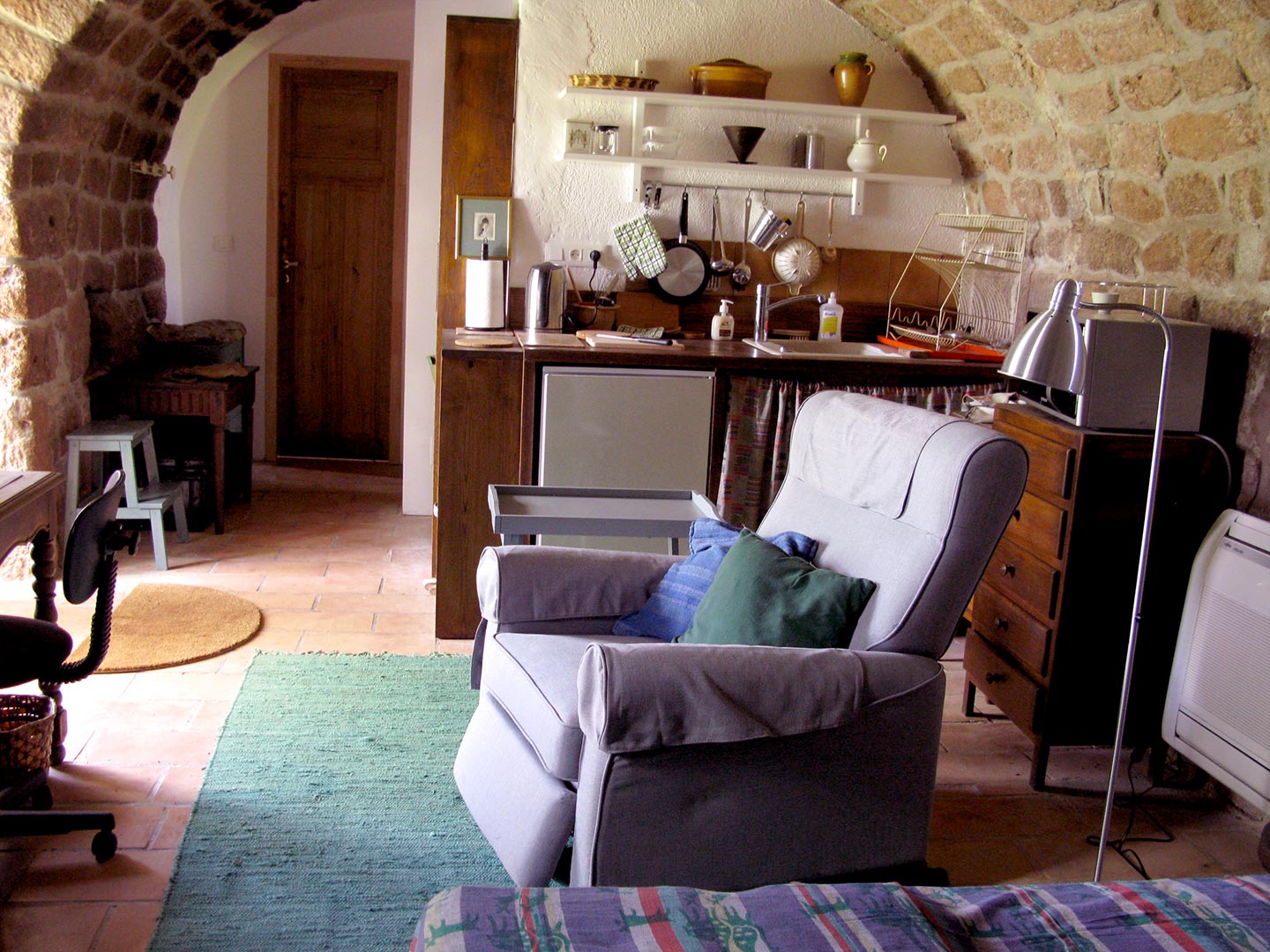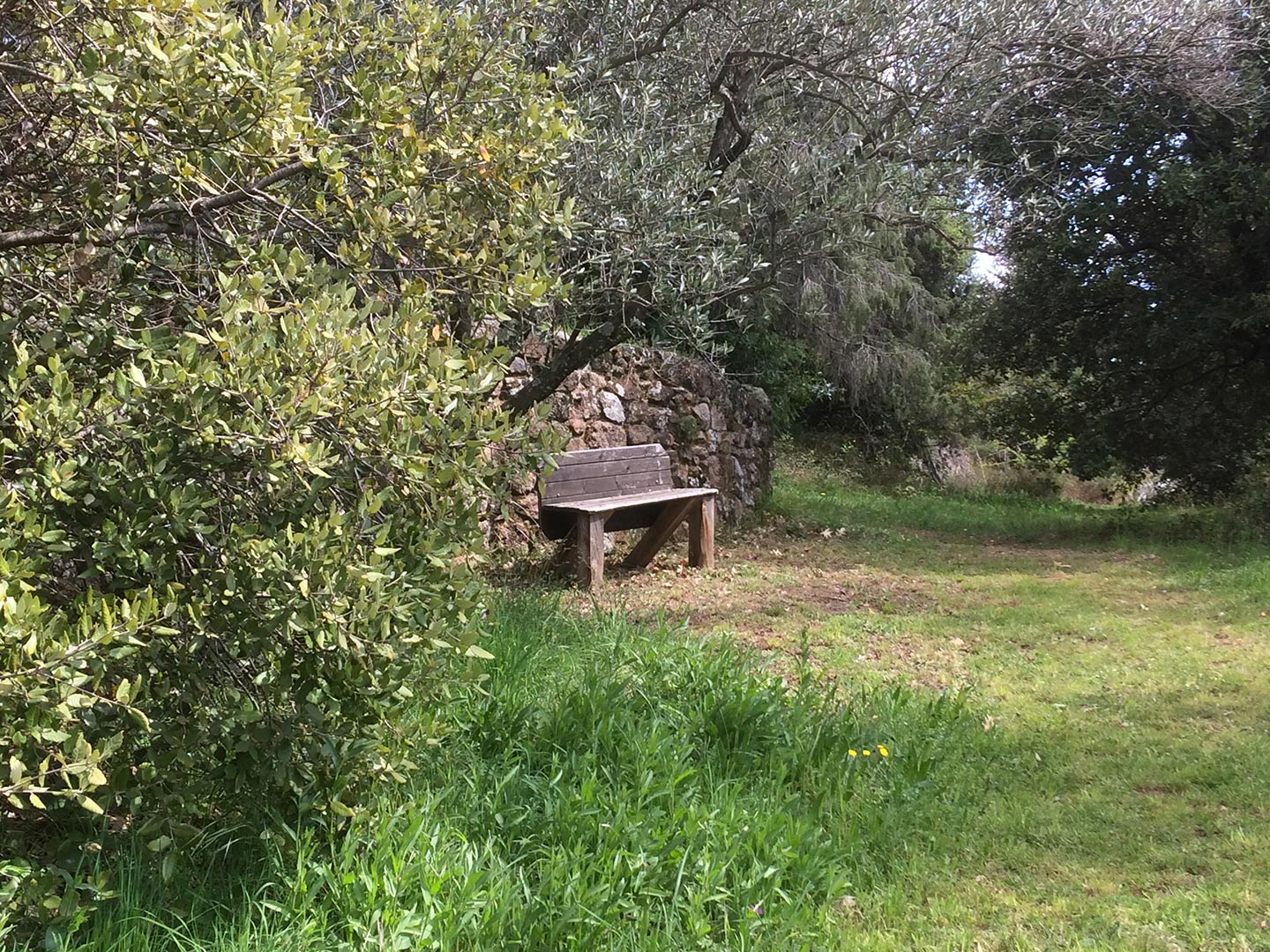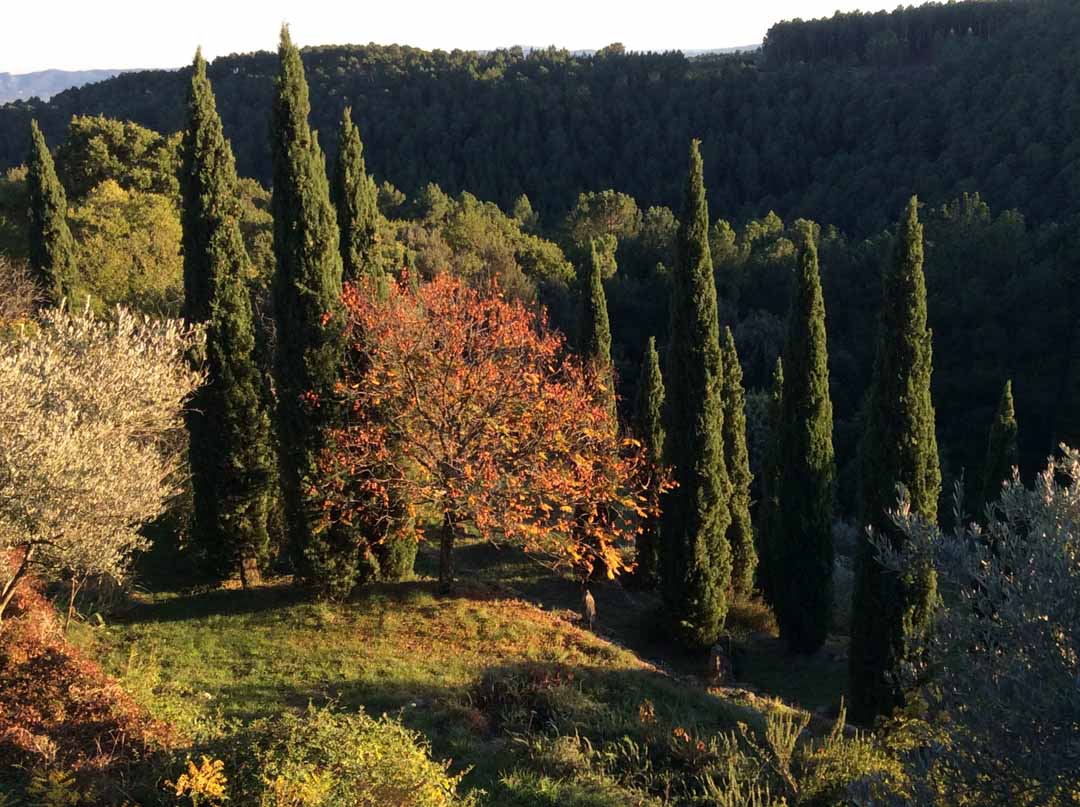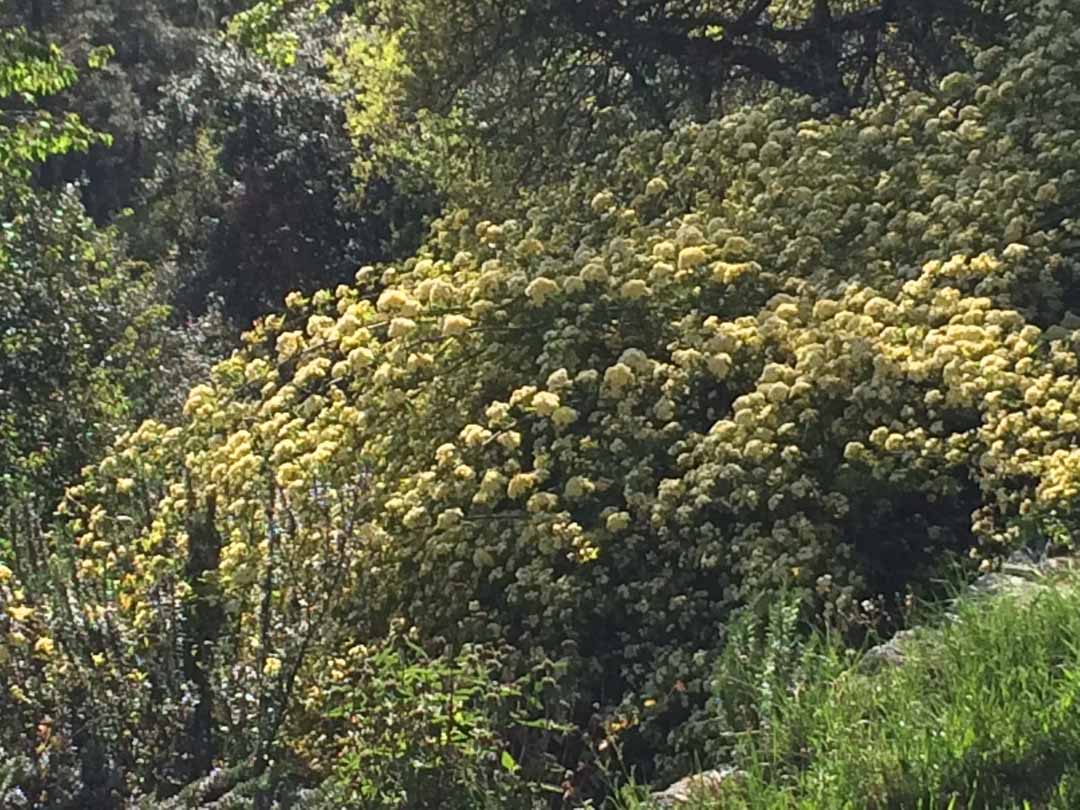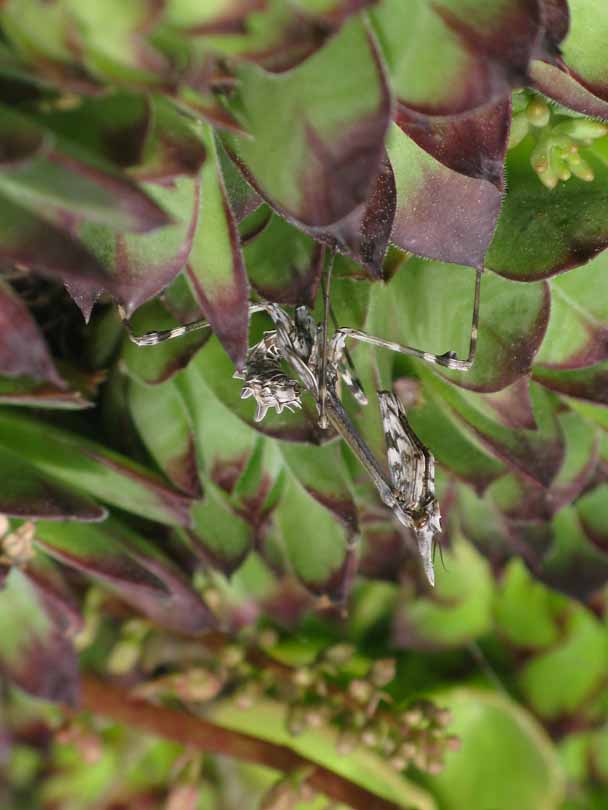Mas de Rousselonge
A retreat house for specialists in life studies
including gardens, crafts and art
The Mas de Rousselonge in south-eastern France offers a quiet place to work, for a few days or a few weeks, to explorers of landscape, gardens and nature—scholars, scientists, ecologists, agronomists, painters, sculptors, architects, designers, performers, musicians, cooks, etc. The old stone house sits on roughly fifteen acres of drystone terraced hillside on the southern slopes of the Cevennes hills (Mediterranean middle mountain climate). In this region as well as in Provence, the term “mas” refers to a domain, including both buildings and land. It was judged appropriate for a place where humans and other forms of life blend harmoniously into one whole. The aim of this not-for-profit venture is both to preserve and share the serenity of this place with its exceptional diversity. It may also be used for small private seminars or meetings (12 people maximum). Since 2019, it has been managed in partnership with the regional Conservatoire d’espaces naturels.

Payzac (500 inhabitants) is a village composed of sixteen hamlets. It is a convenient stopover for people travelling from northern Europe to the south, or between Spain and Italy. The rural architecture and landscapes here are exceptionally beautiful, and the area offers some of the best locally-grown food in the world. In the last fifty years, it has housed experiments in ecology and alternative living such as Pierre Rabhi’s Terre et humanisme, a regional natural park with a famous international art trail Le Partage des eaux, a mountain art cultural foundation the Sentier des Lauzes. The prehistoric Chauvet cavern, landscape art 33000 years old, is an hour’s drive away. To the north, mountain pastures full of wildflowers ; everywhere, markets and villages, some transformed into year round cultural centres. 3 kilometres down the road : the Comptoir de Payzac : grocery, café and bistro, resource centre.
Louisa Jones, garden and landscape writer


The House
The stone house dating from the 18th to the 21st century can serve for private research or small workshops, seminars and lectures. Each of its five studio apartments sleeps 1-2 people. The vaulted cave can sleep from 1 to 5 for short meetings. Each space has a separate entrance, its own shower/WC, a kitchen corner with fridge, a work space and well-lit armchair. Common rooms include a library with both specialized books and general literature; a well-appointed kitchen for gas and electric cooking, seating six to eight ; a laundry room; a big outdoor terrace with fine views ; an office/common room with TV and woodstove ; a separate workshop building for meetings (maxiumum 15), with projection facilities.
There is a nature-friendly, 9x4m swimming pool, and many shady and sunny corners for walking, sitting, absorbing. All around, there is a dense local network of hiking and biking trails. However a vehicle is necessary here for access and for errands. No food is provided on the spot except for basics. Best seasons: September through June.

For Interior views
Click on the picture to start a slideshow

The Hillside
On our 7H1/2 of land, the predominant climate is mid-mountain Mediterranean (average altitude 380 m). Three geological systems meet in Payzac, permitting an exceptional biodiversity. Our drystone wall terracing extends almost to the bottom, where a small ravine shelters a stream. At the top of the property, the remains of a pine forest encourage heather and bracken, giving way as you descend to wild cherry, maples, birch, acacias and arbutus. The central part, the most open, mixes wild flower meadows (mowed twice a year), bramble patches, white and green oak, rosemaries and laurustinus, arbutus, broom, etc.

A potager mixing vegetables, herbs and flowers extends between the two houses. On the lower part of the hillside, where once chestnuts were planted, an oak forest gives way to pine trees once again. Holly and alder thrive near the stream. Over forty years, we first cleared the invasive pines, brambles and old vines, then enriched the vegetation around the houses with appropriate trees and shrubs, some now very big : cypress, sophoras, roses, lindens or limes, catalpas, koelreuterias, ornamental cherries and crabapples, and many producing fruit trees (almonds, peaches, apples, kiwis…) Today only the vegetables and new plantings are watered.
My husband, Bernard Dupont, maintained the drystone terracing (pink sandstone) but also created beautiful new features. Many of these involve standing stones, those used in earlier times on the outside edge of terraces.

For pictures of the gardens and hillside
Click on the picture to start a slideshow
Rousselonge/diagnostic du CENRA
Download PDF file
Rousselonge/flore 2017/2020
Download PDF file
Obligation Réelle Environnementale
Download PDF file



